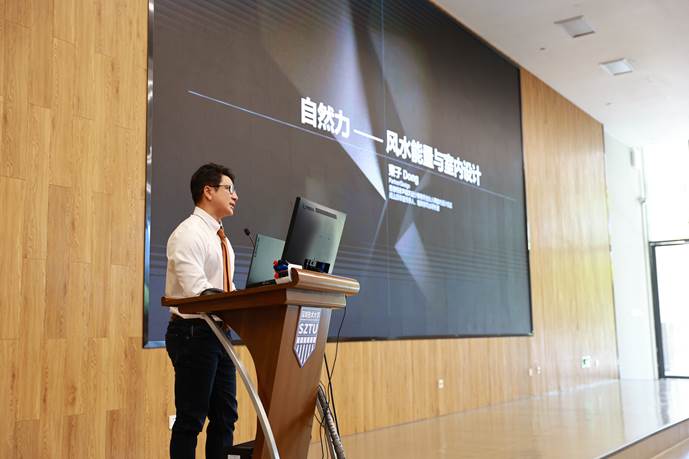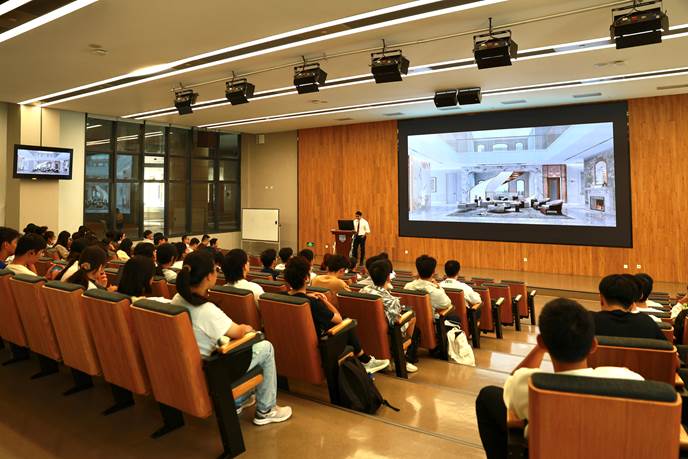To deepen students' understanding of the relationship between environment and humanity and expand interdisciplinary innovative thinking, Prof. Dr. Jack Woo from Business School of Shenzhen Technology University invited Dongzi, a Partner and Interior Design Director at Ben Yeung & Associates Ltd, inheritor of the Lushan School intangible cultural heritage, and Kan Yu (Feng Shui) researcher, to deliver a special lecture titled "Natural Forces - Feng Shui Energy and Interior Design" on October 25th. The lecture explored the integration of environmental energy and modern living space design.

At the beginning of the lecture, Dongzi used the Chinese philosophical concept of "Harmony between Heaven and Humanity" (Tian Ren He Yi) as a starting point, guiding students to re-examine their surroundings based on their intuitive experiences. He skillfully integrated findings from Western environmental psychology and ergonomics with Eastern philosophical wisdom, systematically explaining the scientific essence of "Feng Shui" as an ancient form of "environmental data science." He emphasized that its core principle is a systematic theory and methodology aimed at pursuing harmonious coexistence between humans and nature.
During the core content segment, Dongzi clearly explained the "Four Forms" (Sixiang) pattern and "Water Management" (Li Shui) principles within Feng Shui's Form School (Xingluanxue), translating traditional environmental observation into a spatial language understandable to modern audiences. He encouraged students to view the city as a living entity. By analyzing landmark cases in Hong Kong, Guangzhou (e.g., K11), and Shenzhen, he vividly decoded the "energy map" contained within macro-level urban layouts, equipping students with a unique perspective for preliminarily assessing the environmental value of locations from a broad strategic viewpoint.
Theory ultimately serves practice. Through several interior design cases he personally handled, such as resolving "road冲" (Lu Chong - rushing road alignment) configurations and optimizing the "indoor Four Forms," Dongzi concretely demonstrated how to translate traditional wisdom into modern design language to enhance the comfort and positive energy field of living spaces. He specifically addressed practical concerns students will face in the future, like renting or buying property, by providing a concise and practical "Environmental Selection and Optimization" guide. He stressed that optimizing one's living environment is an investment in personal well-being and development potential, reflecting the School's educational philosophy of cultivating application-oriented talent and caring for students' long-term development.
The lecture featured novel content and a unique perspective. It was not only an academic feast blending traditional culture with modern design but also an enlightening session guiding students on how to scientifically select, optimize their living environments, and enhance their quality of life in the future. It received an enthusiastic response and unanimous praise from the attending students.

Text/Picture: Fang Xiang Feng
Review: Prof. Dr. Jack WOO